With so many productivity apps and platforms to choose from, it can be difficult to determine which are the best for you as a people manager, for your individual work, and for you to recommend to the rest of your team. We asked our community of CEOs and executives to share which apps they use and would recommend to other leaders looking for new collaboration and productivity tools. Here are the five productivity apps that were mentioned the most.
1. Airtable
Airtable is a database that’s been widely adopted by leaders because of how easy it is for teams across their organization to use. A great alternative to shared Google Sheets, Airtable can be used by HR and Recruiting for applicant tracking and employee information management, or by Product to keep track of user research or project sprints.
Most CEOs at earlier stage companies, however, recommended Airtable for its CRM capabilities. Airtable requires little to no technical support to get started, unlike other CRM providers, and it enables you to visualize your sales pipeline. Depending on what customer support or marketing software your organization uses, Airtable offers integrations with tools such as Mailchimp, Zendesk, and more.
Our Double assistants have used Airtable to create personal contact databases for their executives, as well.
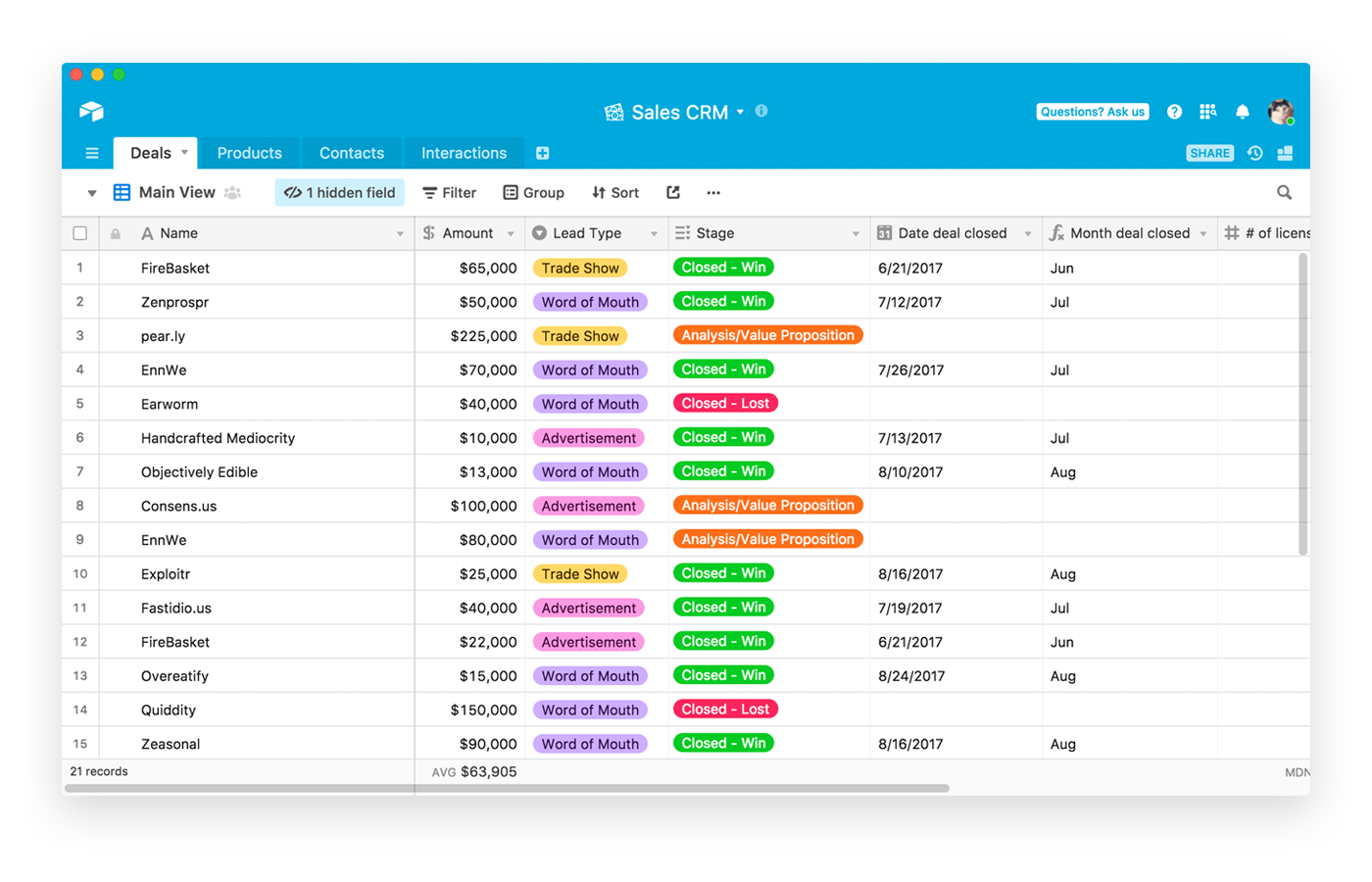
2. Notion
Notion is a collaboration tool that functions as a knowledge base and project manager for your entire company. Unlike Google Drive and Wikis, Notion makes keeping your information organized and up-to-date easy instead of a constant project. Notion has been particularly helpful for remote onboarding, as new employees can self-navigate through new hire documents and see what the team is working on without feeling lost or overwhelmed.
At Double, Notion has helped our product team stay in close alignment with our customer and operations teams. We can all see and collaborate on our roadmap, which historically would live in tools like Atlassian or GitHub that not everyone has access to.
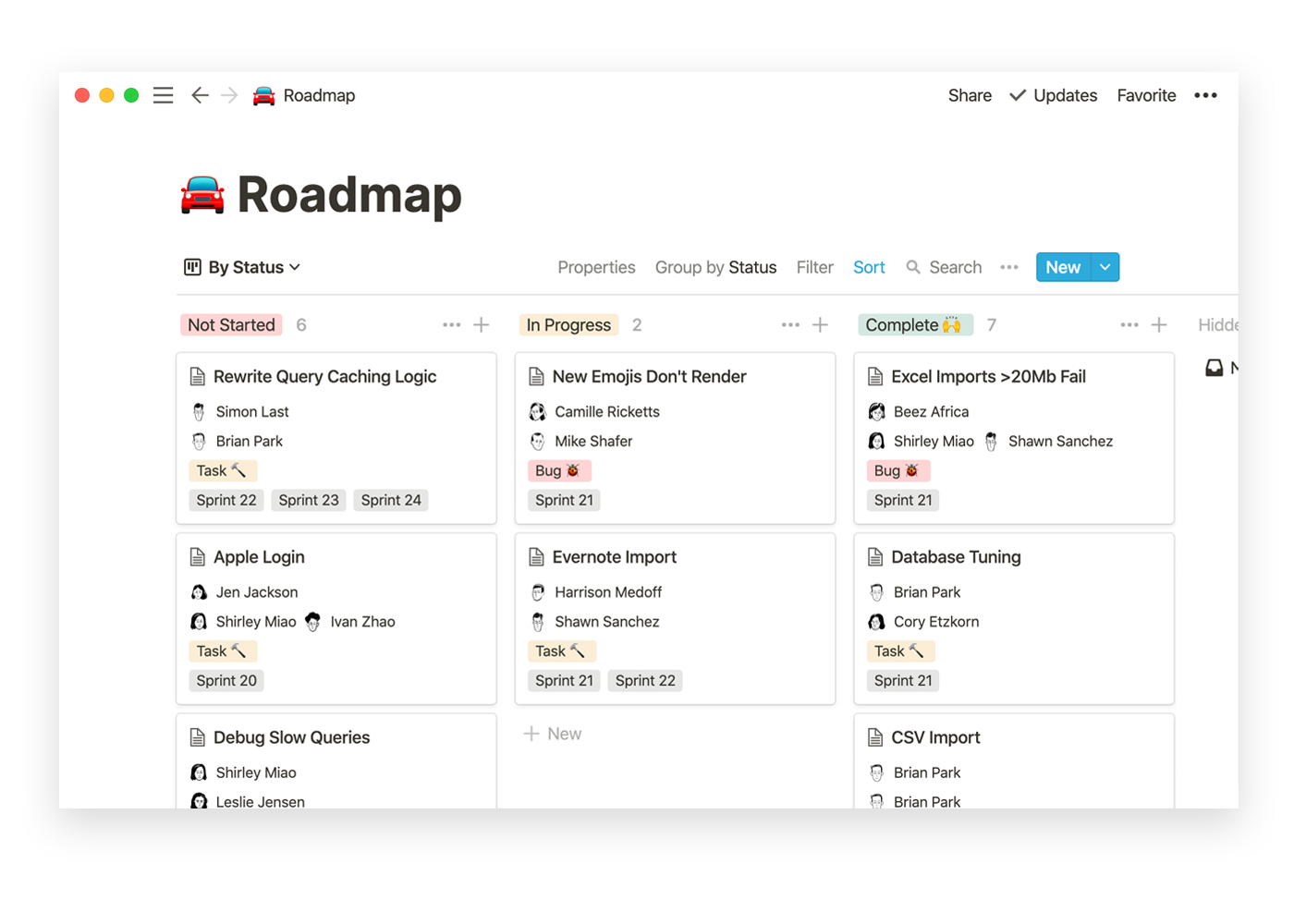
3. Front
Front is an email management app that allows you to consolidate your company’s communications with your customers. Depending on where you reach your customers–– whether it’s via live chat or direct messaging on social platforms––it can be difficult to get visibility into their experience with your team. Not only does Front give leadership direct access to all of these channels, but it makes growing and scaling your customer-facing teams a lot easier.
Because Front functions as a shared inbox, your team can also tag you in conversations with investors or early customers so you can provide context or choose to respond yourself. When your team identifies recurring questions or tasks, they can use Front’s if-then rule to create automatic replies to save them time.
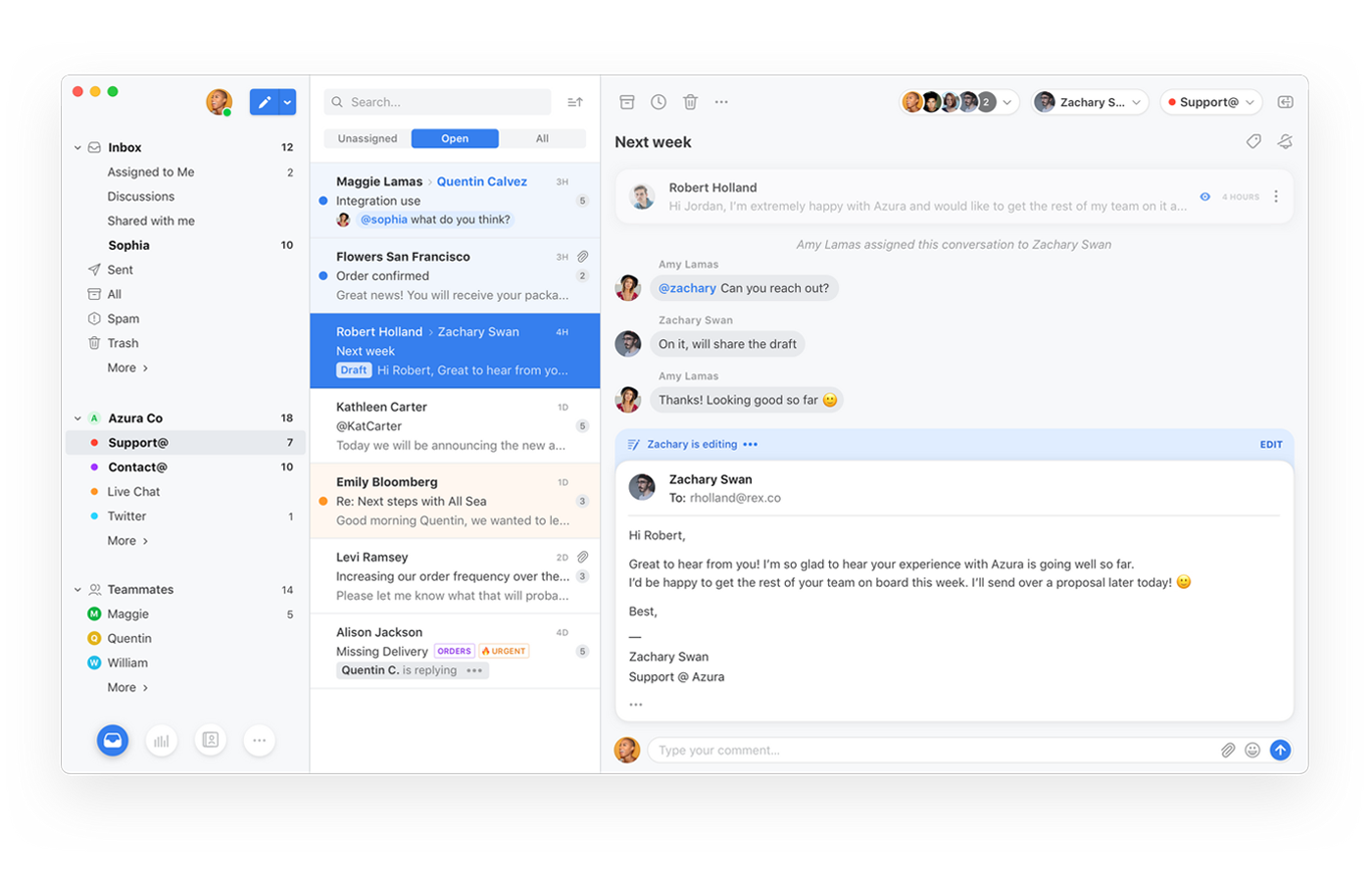
4. Double
Double is a flexible assistant service that connects executives with experienced assistants and makes delegating work more efficient. Working with an assistant requires sharing a lot of context and background, which takes time and often occurs across platforms like Gmail, Slack, and even text. Double’s app integrates with these tools to make sharing that context faster and improves your line of communication with your assistant by linking it to discrete tasks. Busy executives rely on Double’s voice notes to quickly share project details between meetings or while they’re traveling.
Leaders at early stage companies or that work on a small team of founders recommend Double because of its flexibility. With a pay-as-you pricing model, you only pay for the number of hours that your assistant works. Because Double’s assistants are local to your area but work remotely, Double is increasingly used by teams that are fully remote or part-time remote.
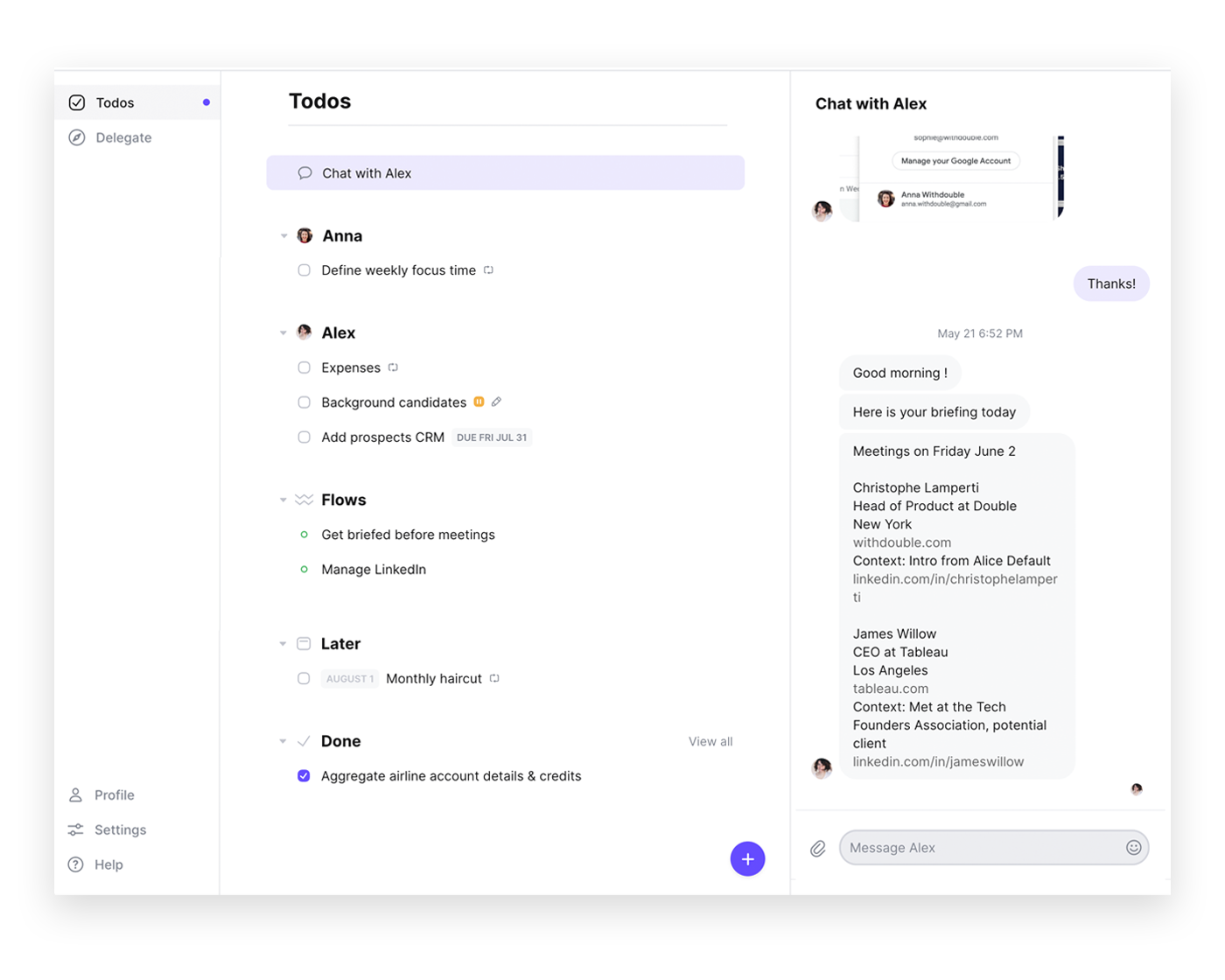
5. Trello
Trello is a visual project management tool that teams use to manage and plan their roadmap. Compared to other collaborative project management tools like Asana and Basecamp, Trello gives you quick visibility into what your team is working on without requiring you to be an active user or participant on different projects. As an executive, you can choose to join specific cards that you’re interested in to receive email updates on only those projects.
Trello is also a great tool for cross-functional collaboration, as there is no customization per workspace or organization and you can easily switch between project and team boards. Even if your Product and Engineering teams are working in GitHub or Confluence and your Marketing and Sales team are working in Airtable, you can create a Trello board for company-wide projects like expanding to a new market, launching a new product, or just tracking your company-level quarterly initiatives.
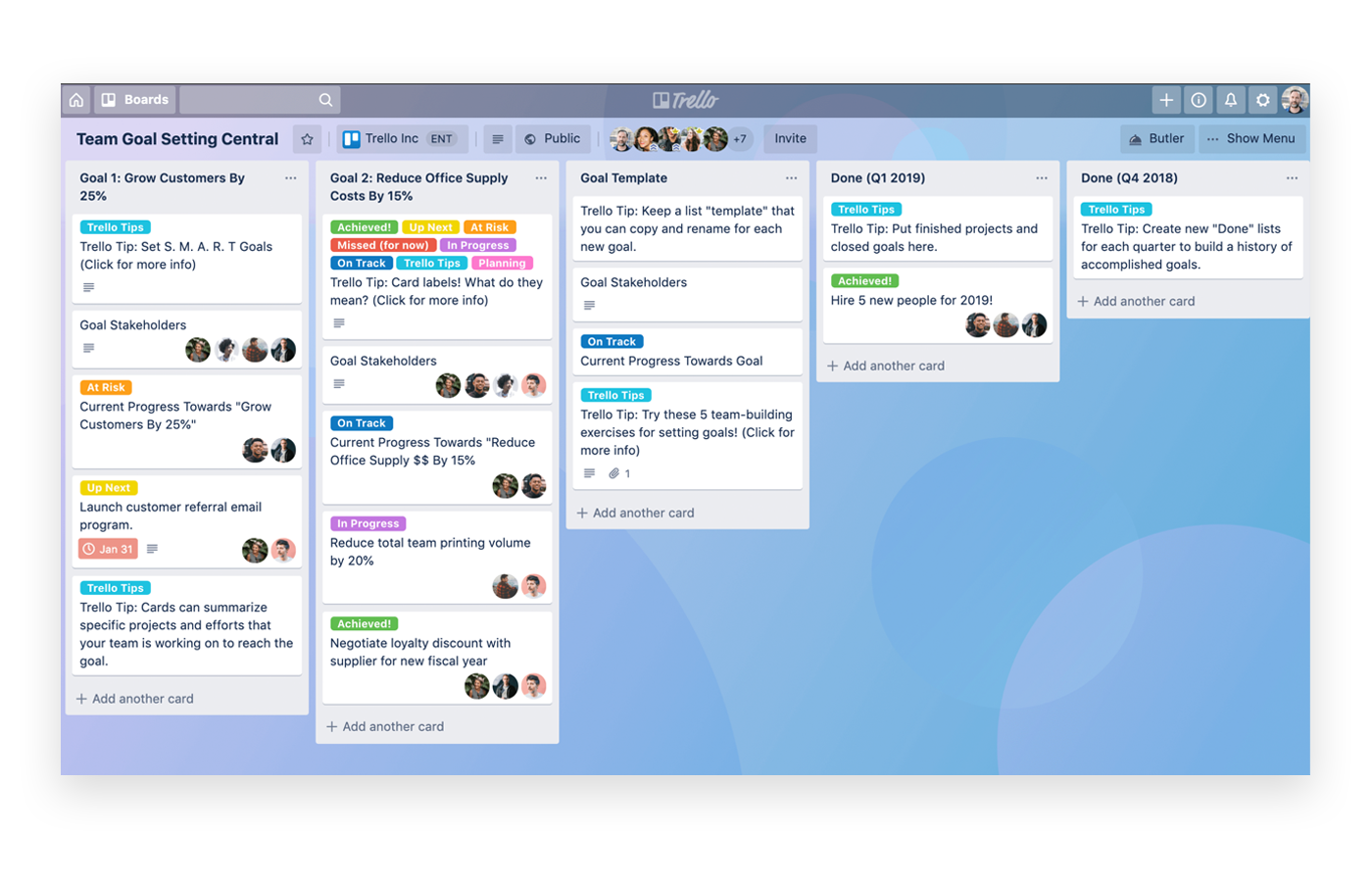
Choosing which tools to use is a daunting task because while you're motivated to get something up and running today, you also want to find a solution that will scale with your business. By leveraging your network of founders and leaders, you can learn how different tools have been effective for their teams. These five recommended productivity apps are just one place to start.
For other advice from our network of executives, check out how executives prepare to take time off from work and the top 10 tasks executives should delegate to their assistant.
